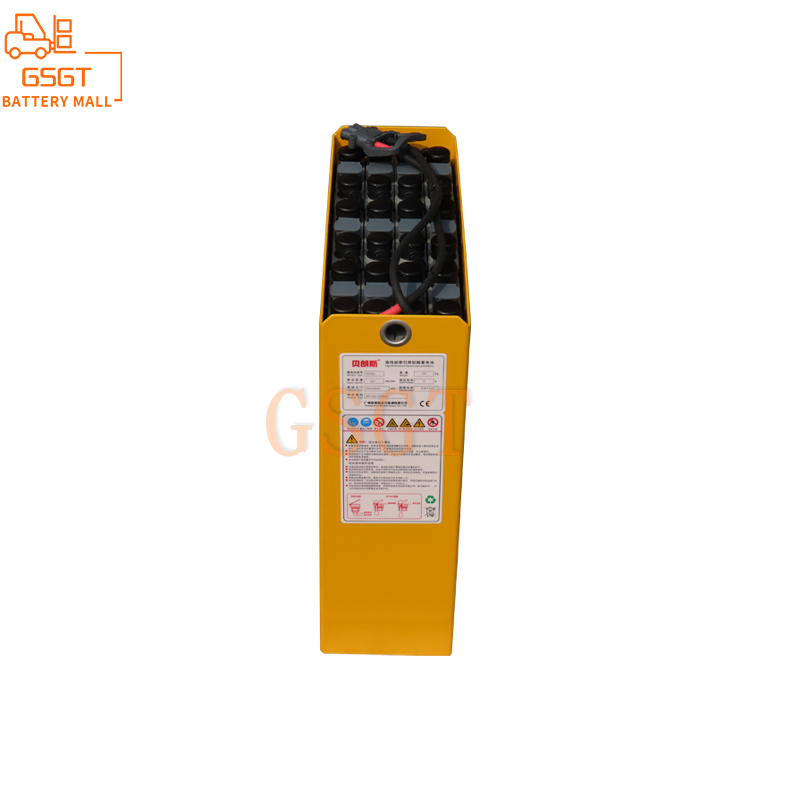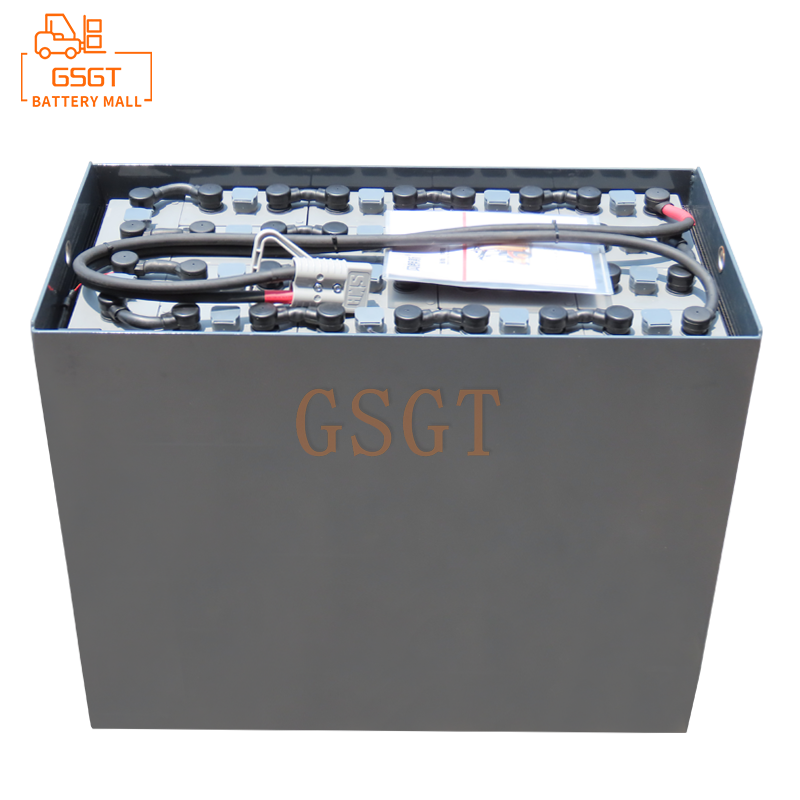Time:2025-04-10 09:17:42
Browse:593
In modern life, lead-acid batteries, with their advantages of low cost and mature technology, are widely used in automotive start-up, uninterruptible power supply (UPS), electric bicycles and many other fields. However, the lead-acid battery involves the conversion of chemical energy and electrical energy, and if used and maintained improperly, it is easy to cause security risks. Therefore, the systematic and scientific investigation of lead-acid battery safety hazards is crucial to ensure the normal operation of equipment, the safety of personnel and the environment is not polluted.
Appearance inspection: the first level of hidden danger investigation
The appearance of lead-acid batteries is an important window to directly reflect their health status. First, carefully check whether the shell is cracked or deformed. In daily use, the battery may crack due to collision, extrusion, and the strength of the shell can not withstand. Once these cracks appear, they will not only lead to electrolyte leakage, but also may allow air to enter the battery, accelerate the oxidation of the plate, seriously affect the battery performance, and even cause short circuit. For the starting lead-acid battery installed at the bottom of the vehicle, the stone splashing and road bumps during the driving may cause shell damage, so each maintenance should be emphatically checked.
The cleanliness of the battery surface can not be ignored. When a large amount of dust, oil and electrolyte accumulate on the surface of the battery, a conductive path will be formed, resulting in increased self-discharge of the battery, and electricity loss for no reason. At the same time, this mixture may also corrode the battery casing and shorten the battery life. Wipe the battery surface with a clean, damp cloth and observe whether there are difficult to remove stains or corrosion traces. If yes, further check the surrounding environment of the battery for leakage sources or other pollution sources.
Electrode column position is also critical. The electrode column is connected to the battery and the external circuit to see if there is corrosion, which is commonly manifested as a white or green paste on the surface of the electrode column, which is due to the electrolyte overflow inside the battery and chemical reaction with the metal of the electrode column. Corrosion will not only increase the contact resistance between the electrode column and the connection line, resulting in lower charging and discharge efficiency, but also may loosen the connection in serious cases, causing a break, affecting the normal operation of the device. Regular cleaning of the electrode column and the application of special protective grease can effectively delay the corrosion process.
Electrolyte check: to ensure the health of the battery "blood"
Electrolyte is the core medium to realize the electric energy conversion of lead-acid battery, and its state is directly related to the battery performance. First, check the electrolyte level. Most lead-acid battery shells are marked with liquid level scale lines, and under normal circumstances, the liquid level should be between the upper and lower limits. If the liquid level is too low and the plate is partially exposed to the air, it will accelerate the plate vulcanization and reduce the battery capacity; If the liquid level is too high, the electrolyte may overflow during battery charging and discharging, corroding the device and the surrounding environment. If the liquid level is abnormal, for the open type battery that can add distilled water, the distilled water should be replenished in time to the appropriate liquid level; For maintenance-free batteries, abnormal liquid level often means that there is a fault inside the battery, which needs to be handled carefully and replaced when necessary.
Electrolyte density is also an important indicator of battery health. The density meter is used to measure the electrolyte density, and the electrolyte density has a specific standard value for different types of lead-acid batteries in different use states. For example, a lead-acid battery used for starting a car on a full charge usually has an electrolyte density between 1.26-1.28 g/cm³. The density is too high, which may be due to overcharging of the battery, resulting in excessive evaporation of water, which will accelerate the aging of the battery; If the density is too low, it may be that the battery is discharged excessively or there is a short circuit inside, making the sulfuric acid consumed too quickly. By measuring the electrolyte density regularly and comparing it with the standard value, the abnormal charging and discharging of the battery can be found in time, and the charging strategy can be adjusted to ensure the normal operation of the battery.
Electrical performance testing: accurately locate potential hazards
Voltage test is the most basic electrical performance test means. Use a multimeter to measure the open circuit voltage of the battery, that is, the terminal voltage of the battery when the load is not connected. For lead-acid batteries with a rated voltage of 12V, the open circuit voltage after full charge should generally be about 12.6-12.8V. If the open circuit voltage is significantly lower than this range, it indicates that the battery may have a power loss phenomenon, and it is necessary to further check whether the charging device is working normally, or whether the battery has plate vulcanization, short circuit and other problems. During the battery discharge process, continuously monitor the voltage change. If the voltage drops too fast, the battery capacity attenuation is serious, and it may be necessary to conduct in-depth charging and discharging repair or replace the battery.
The internal resistance test provides a more accurate assessment of battery health. With the increase of battery use time, the internal plate active substances gradually fall off, electrolyte drying and other factors will lead to the increase of battery internal resistance. Use a professional battery internal resistance tester to measure the internal resistance of the battery and compare it with the internal resistance reference value of the new battery. In general, the internal resistance exceeds 20%-30% of the initial value, the battery performance will be greatly affected, at this time the battery in the charge and discharge process significantly increased heat, charge and discharge efficiency is greatly reduced, there is a potential risk of overheating and even fire. If the internal resistance increases abnormally, maintain or replace the battery in time to prevent accidents.
Charging and discharging performance test is the key step to check the performance of lead-acid battery. Under laboratory conditions, the charge and discharge cycle test of the battery was carried out by simulating the charge and discharge conditions in actual use, and the charge acceptance capacity and discharge capacity of the battery as well as the voltage and current change curve during the charge and discharge process were recorded. If the battery has abnormal voltage fluctuations, long charging time, and insufficient discharge capacity during the charging and discharging process, it indicates that the battery has internal faults, such as plate vulcanization, active material falling off, and positive and negative electrode short circuit caused by plate damage. According to the results of the charge and discharge test, repair measures can be taken or the battery can be replaced to ensure that the battery is safe and reliable in actual use.
Work environment assessment: Eliminate external security threats
The working environment of lead-acid battery has an important influence on its safe operation. In terms of temperature, the suitable working temperature of the lead-acid battery is between 20 ° C and 30 ° C. When the ambient temperature is too high, the chemical reaction speed inside the battery is accelerated, the electrolyte evaporation is intensified, the battery water loss is serious, and the plate corrosion speed will also rise sharply, resulting in shortened battery life, and even safety accidents such as bulging and fire caused by overheating. During high temperature seasons, ensure that cooling devices such as air conditioners work properly for UPS battery packs installed indoors to maintain a stable indoor temperature. For the backup battery of the communication base station used outdoors, measures such as shading and ventilation can be taken to reduce the battery temperature.
Humidity is also a concern. A humid environment is prone to rust and corrosion of the battery shell and electrode column, which reduces the insulation performance of the battery and increases the risk of leakage. Check the humidity of the battery installation site. The relative humidity should be controlled at 40%-60%. If the ambient humidity is high, install a dehumidifier to keep the air dry. At the same time, periodically take anti-rust treatment of the battery cover and electrode column to prevent security risks caused by humidity.
In addition, the ventilation around the battery is equally important. During the charging and discharging of lead-acid batteries, hydrogen and oxygen are produced, among which hydrogen is flammable and explosive. If the ventilation is poor, hydrogen accumulates to a certain concentration, and it is easy to cause an explosion when it encounters an open fire or electrostatic spark. Ensure that the battery installation space has a good ventilation system, so that the generated gas can be discharged outside in time, do not stack inflammable and explosive materials near the battery, avoid welding, cutting and other operations in the battery working area that may cause open fire, and eliminate the safety threat caused by gas accumulation at the source.
The safety hazard investigation of lead-acid batteries is a comprehensive and systematic work, covering many aspects such as appearance inspection, electrolyte inspection, electrical performance testing and working environment assessment. By regularly and carefully checking for safety hazards, and taking effective maintenance and repair measures in time, you can not only ensure the normal service life of lead-acid batteries, but also ensure their safety during use, and avoid serious consequences such as casualties, equipment damage, and environmental pollution caused by battery failures. Whether in industrial production, transportation or daily life, paying attention to the safety hazards of lead-acid batteries is an important link to ensure the stable operation of equipment and maintain the order of production and life.

$1105

$4045

$1270

$2140

MESSAGE
Professional And Efficient
Security
Affordable Price
Professional Services